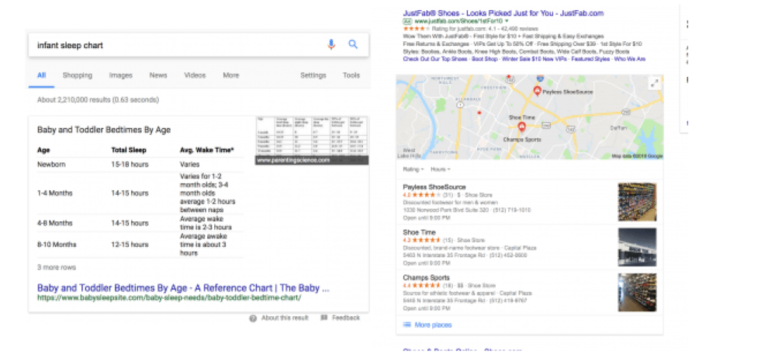If you want to write for yourself, you can keep a journal. You blog because you want others to join what you want to say, or because you know that it is a valuable way to promote your website. Either way, you need other people to find you.
You already know SEO basics – to include keywords in your titles and headlines, fill in your meta description, and promote your work on social media.
But to really stand out in the competitive world of online content, you need to move towards more advanced SEO tips. Here are some important advanced SEO tips to include in your blogging strategy.
Search engine optimization (SEO) gets a bad rap among bloggers. On one hand, the search engine is one of the top traffic generators for most blogs. But at the other end, there is a misconception that writing “SEO optimized content” means filling in keywords in paragraphs and headers, resulting in barely readable blog posts. However, it is not about SEO.
There are always new SEO tips for bloggers popping up on the web. It is even more difficult for new bloggers to know what they can do when it comes to getting content to show high in search engines. It seems that the go-to strategy is popular one day, and becomes absolutely toxic after a few months.
Here are seven highly effective SEO tips for bloggers that you need to implement right now:
1. Write for your audience
When “SEO content” became a buzz, we started seeing some very big drops in the quality of writing from bloggers. They were beginning to write specifically for search engines (robots) instead of people.
Unfortunately, some bloggers still write like this today. But luckily it has gotten a lot better, especially after the Hummingbird update and the trend towards voice searches.
The Hummingbird update was created to help Google better understand the intent of searches. For example, if you were a Google “place to get burgers”, Google would interpret that you are searching for a local restaurant.
Remove your attention from thinking about keywords, and to provide content that solves the problems of your target audience. You can use Quora, forums, social media, and other resources to explore your audience’s struggles. Then provide a solution with your blog.
2. You do SERP research on every subject
Not all search engine result pages look the same. With the recent increase in rich results, some searches produce a simple list of links, some have answer boxes up, some have product ads at the top of the results page, and some have page dominance Contains a map of local results.
It is important to know what the search results page looks like for the term you are targeting, that it is best to optimize your blog post for the best spots on the page and ensure that your content is at once in your work Come on.
3: Nail On-Page SEO Basics
In the same stocking study mentioned earlier, the second most important ranking factor was on-page optimization. The great part about on-page SEO is that you have a lot more control than off-page factors like backlinks. There is a lot that goes into on-page SEO, but you don’t have to be very technical to get started. Just doing the basics will keep you ahead of the game.
SEO friendly URL: The URL of your website must clearly show what the page is about. Let me tell you that there was a blog post about the best ugly Christmas sweaters. Instead of “www.yoursite.com/p=382”, it should be “www.yoursite.com/best-ugly-christmas-sw theater”. Limit your URL to around 2-5 words and include your target keywords.
Meta Title: A meta title helps search engines determine the main subject of a page. It shows at the top of your browser, and also in search results. Include your target keyword in your meta title, but keep it natural. No keyword stuffing!
H1 tag: Every page on your site should have an H1 tag. This is the title of the page. If you use WordPress, the post title will be automatically given the H1 tag. However, sometimes some themes override this feature, so double-checking is always good.
Subheadings: Apart from H1 tags, you should also use subheading tags like h2 and h3 to clearly structure your posts. Subheading makes it easy for readers and search engines to navigate your content.
Picture: Adding multimedia to your post makes them look more visually impaired. When it comes to optimizing your images, one of the most important tasks is installing an alt tag. Since search engines do not see bot views and only text, alt tags allow them to know the content of an image. Your total tags should describe the images you added.

Outbound links: Adding links to relevant content within your posts helps search engines better understand what the topic of your content is. Not only that, but you can access the sites from which you build and build relationships. In return, they can share your post with their audience.
Internal link: If you have been blogging for some time, you should have a solid library of content that you can interlink. Adding internal links (links from one post on your site to another post) helps search engines better understand the topic of your blog content, and keep people on your site longer.
Usability: It sounds simple, but so many bloggers ignore the importance of a site that functions correctly. Do all the images in your content work? Are there broken links? Does your content load quickly? All these factors affect the user experience, which is very important for on-page SEO. We will go over a few different tools in tip number 6 to help you investigate and fix any potential usability problems on your site.
Those are some basic steps that you can take to improve your on-page SEO. The goal is to make it easier for search engines to understand the topic of your content. The more relevant your content appears, the better ranking you have in search engines.
4. When optimizing for richer results.
If your SERP research reveals keywords that bring rich results, then the approach you take when optimizing your content should be based on the specific type of results that win that page. In some cases, this will mean that using schema markup will help your content stand out in the main list of results, in other cases it will mean targeting your blog posts for select snippets.
5. Guest post on relevant blog.
The hardest part of SEO is getting other websites to link back to you. The best way for bloggers to create a link back to their blog is to create valuable content for related websites. It requires a lot of work to do (you already know that good content works), but it gives you a way to reach a new audience and improve the SEO authority of your website.
Identify some blogs that cover topics similar to those you write about or complement, and find out if they accept guest posts. They then take some time to get acquainted with the types of posts and topics that are most popular with their readers and before coming up with a blog post idea to write for them.
Be prepared to get some disapproval, especially if you are targeting blogs that have a huge readership. But each guest post you post will make your blog familiar to new audiences and give you the opportunity to return to your own blog. Just make sure you don’t overdose it so that your post doesn’t look spam – stick with one or two relevant links.
6. Invest in SEO Tools
Just like with social media marketing, SEO is something that can be handled manually, but it is more efficient to use the tool. There are hundreds of SEO tools available to help different aspects of optimization. Here are some basics to get you started:
Keyword research: Keyword research is one of the most important parts of SEO. You want to make sure that you are creating content about the topics that your target audience is searching for. In addition to brainstorming, you can use these tools to streamline the keyword research process:
Rank Tracking: Although keyword ranking is losing its relevance as personalized search results become more popular, rank tracking tools will give you an indication of where your content appears in search results for your targeted keywords. Here are some options to consider:
- Advanced web ranking
- Searchmetrics
On-page SEO: Manually trying to make sure you hit everything on the on-page optimization list mentioned earlier. Fortunately, these devices can handle the dirty work for you.
- Yoast (for WordPress users)
- Screaming frog
Link Building: As we mentioned, getting other sites to link back to you is one of the top search engine ranking factors. You should not use automated link building software, but these tools make it easy to discover new opportunities to earn real backlinks.
Content Creation: You not only need to target the right keywords, but you also need to write about topics of interest to your audience. Coming up with new ideas for content is very easy with these tools.
All-in-one tools: Apart from these tools, you can also consider using these all-in-one tools that perform many different SEO related tasks.
7. Build Your Authority
While Google relies on algorithms to determine where websites rank in search results, it also uses humans to manually review the quality of websites it shows. Whether there are good or bad criteria about a site, Google asks these manual reviewers to tell a site about its search quality evaluation guidelines. Until recently, the book has been unavailable to the public.
Your content should show that the people contributing to the content on your website or your blog are credible and have some level of expertise on the topics covered.
Official content is not required only to be written by a celebrity. The best resource on the subject is that crafting a piece of content can qualify. For example, if you wrote an in-depth blog post about how to install a graphics card in a computer, and it has more details and information than a post on a more well-known site, your content may still be more authoritative.
As you start creating more great content and networking, your blog will start to be outlined around the web, which will help build your authority even more.
8. Feature influencer in your blog post.
Like guest posts, finding ways to collaborate with influential people is a useful way to get your blog in front of a wider audience. This could mean doing an interview with them, one of them featuring a quote, pointing out an example of what they do well in a blog post, or from the advice provided on their site Refer back to (with a link).
By photographing them, you can get on their radar and enable them to share their blog posts with their audience, possibly bringing you new ideas and followers.
SEO should not be complicated
Hopefully, these SEO tips have given you a new approach to using search engines to get traffic to your blog. You must be a web developer or have 15 years of experience with SEO to optimize your website. Focus on creating awesome content (with proper on-page SEO) and building relationships.
Next time you start writing a blog post, keep these SEO tips in mind. You may wonder how much these changes have an effect.
The conclusion
Blogging is one of the things anyone can do to improve SEO, but just one blog and publication post are not enough to keep you competitive. Creating regular content that is always good, however, is the hardest part.
By doing a little extra work to advance the hard work you’re already doing, you can help your audience find you more easily and make sure that your content does its job.
Being aware of your competitors’ actions is vital for every business and our team has prepared a special solution for your clients that will be available until 31September. The Competitive Benchmarking Power Bundle includes: SEMrush Traffic Analytics add-on: a robust solution to benchmark your competitors, understand where and how they get their traffic, and devise your own unique strategic approach; SEMrush PRO subscription: over forty tools that can help you respond to competitors’ marketing challenges based on relevant, reliable data; Access to MarketingU: an Online Business Growth course that will provide you with the latest knowledge required to grow your online presence. This offer is available for all users for $299,95 (a value of $407.33) and is open to purchase until the end of September. Don’t miss the opportunity to promote it among your audience!





